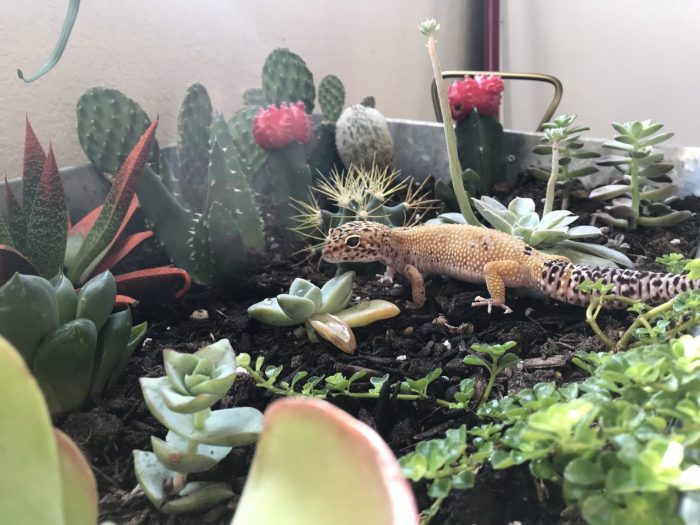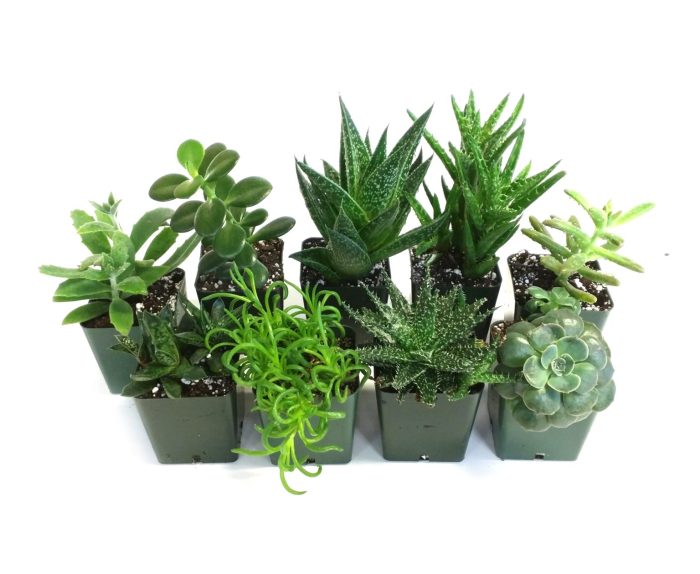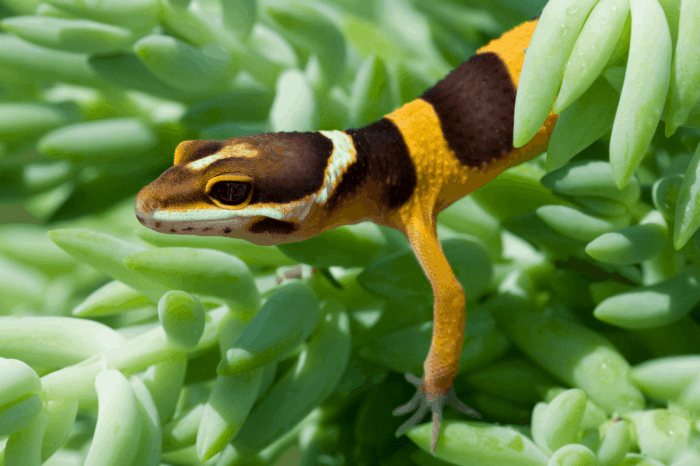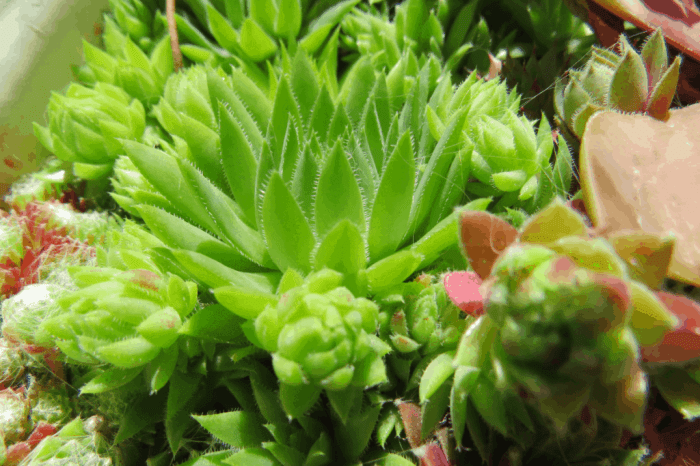Discover the best plants for leopard geckos, creating a thriving and naturalistic environment for your beloved reptile companion. From providing hiding spots to regulating humidity, plants offer a multitude of benefits for leopard geckos.
With careful selection and proper care, you can create a vibrant enclosure that mimics their natural habitat and enhances their well-being.
Suitable Plant Species for Leopard Geckos

Leopard geckos, native to arid and semi-arid regions of Afghanistan, Pakistan, India, and Iran, require a specific environment to thrive in captivity. Among the essential elements of their enclosure is vegetation, which provides shelter, enrichment, and humidity. Selecting appropriate plant species is crucial for the well-being of these reptiles.
Ideal plants for leopard geckos are those that are non-toxic, provide hiding places, and tolerate the dry conditions of their enclosure. Some recommended species include:
Snake Plant
- Benefits:Snake plants are hardy and drought-tolerant, making them suitable for arid environments. Their upright growth habit provides ample hiding spots for geckos.
- Size:Snake plants can reach heights of 2-3 feet.
- Growth Habits:Snake plants grow slowly and require minimal care, making them easy to maintain in a gecko enclosure.
Golden Pothos
- Benefits:Golden pothos is a fast-growing vine that provides dense foliage, creating excellent hiding spots for geckos. It also helps maintain humidity levels.
- Size:Golden pothos can grow up to 10 feet in length.
- Growth Habits:Golden pothos is a vigorous grower that requires regular pruning to keep it from becoming overgrown.
Spider Plant
- Benefits:Spider plants produce long, arching leaves that provide shelter for geckos. They also have air-purifying qualities.
- Size:Spider plants typically reach heights of 1-2 feet.
- Growth Habits:Spider plants are easy to care for and produce plantlets, which can be used to propagate new plants.
Echeveria
- Benefits:Echeveria are small, succulent plants that add variety and texture to a gecko enclosure. Their rosettes of fleshy leaves provide hiding places.
- Size:Echeveria species vary in size, but most are relatively small.
- Growth Habits:Echeveria are low-maintenance plants that prefer well-draining soil and bright light.
Haworthia
- Benefits:Haworthia are another type of succulent that provides unique textures and shapes to a gecko enclosure. Their compact growth habit makes them suitable for smaller spaces.
- Size:Haworthia are generally small plants, with most species reaching heights of a few inches.
- Growth Habits:Haworthia are drought-tolerant and require minimal watering, making them easy to care for.
Environmental Benefits of Plants in Leopard Gecko Enclosures

Incorporating live plants into leopard gecko enclosures offers numerous environmental advantages, enhancing the well-being of these reptiles.
Hiding Places and Shade
Plants provide essential hiding places for leopard geckos, allowing them to retreat from predators, regulate their body temperature, and reduce stress. The foliage also creates shaded areas, offering protection from direct sunlight and excessive heat.
Leopard geckos thrive in terrariums with live plants, which provide hiding spots, humidity, and enrichment. While choosing the best plants for leopard geckos, it’s important to consider non-toxic species. If you’re looking for a unique way to display plants in your gecko’s habitat, consider using hanging baskets.
Hanging baskets allow plants to cascade down, creating a lush and visually appealing environment. Some of the best plants in hanging baskets for leopard geckos include pothos, spider plants, and ferns, as they are non-toxic and can tolerate the terrarium’s humidity and temperature.
Humidity Regulation
Live plants contribute to humidity levels within the enclosure. Through transpiration, the process of water release from leaves, plants add moisture to the air, creating a more humid environment that is beneficial for leopard geckos.
When choosing the best plants for leopard geckos, it’s essential to consider their specific needs. While some plants are suitable for leopard geckos, others may be toxic or harmful. For instance, best plants for border such as aloe vera and snake plants are excellent choices for leopard geckos as they are non-toxic and provide hiding places.
Temperature Regulation
Plants can help regulate temperature within the enclosure. During the day, they absorb sunlight and release it slowly at night, moderating temperature fluctuations. Additionally, the foliage provides insulation, helping to maintain a stable temperature gradient.
Natural Habitat Creation
Live plants replicate the natural habitat of leopard geckos, providing a more stimulating and enriching environment. The presence of vegetation encourages natural behaviors such as hunting and exploration, contributing to the gecko’s overall well-being.
Psychological Benefits
Studies have shown that plants can have positive psychological effects on animals. In the case of leopard geckos, the presence of plants has been linked to reduced stress levels and increased activity.
Considerations for Plant Selection

When selecting plants for a leopard gecko enclosure, several factors must be considered to ensure the well-being of the gecko and the overall health of the enclosure’s ecosystem.
Enclosure Size and Gecko Species
The size of the enclosure and the species of leopard gecko should guide plant selection. Larger enclosures can accommodate taller plants, while smaller enclosures may require more compact species. Additionally, certain gecko species have specific preferences or requirements that should be considered when choosing plants.
Leopard geckos thrive in environments with appropriate foliage, providing hiding spots and enrichment. Similarly, for a cubicle’s well-being, consider introducing best plants for a cubicle , like peace lilies or snake plants, to purify the air and boost morale. Returning to leopard geckos, live plants such as pothos or spider plants offer essential cover and humidity.
Toxicity
It is crucial to avoid plants that are toxic to leopard geckos. Research thoroughly before introducing any plant into the enclosure, and err on the side of caution if there is any doubt about its safety.
When selecting the best plants for leopard geckos, it’s essential to consider their specific needs and preferences. Plants Bunnings offers a wide range of suitable options, including live and artificial plants that can create a natural and stimulating environment for your gecko.
From leafy greens to succulents, these plants provide hiding spots, enrichment, and even a source of food for your pet.
Plant Height
The height of the plants should be considered to provide adequate cover and hiding spots for the gecko while allowing for easy maintenance and observation.
Compatibility
Choose plants that are compatible with the leopard gecko’s natural habitat. Avoid plants with sharp thorns or toxic sap that could harm the gecko.
Tips for Planting and Maintaining Plants: Best Plants For Leopard Geckos
When planting and maintaining plants in leopard gecko enclosures, it is essential to consider appropriate soil, drainage, and lighting to ensure their well-being. The ideal soil should be well-draining and have a pH between 6.0 and 7.0. To enhance drainage, mix perlite or sand into the soil.
Leopard geckos prefer a dry environment, so avoid overwatering the plants.
Lighting, Best plants for leopard geckos
Plants require adequate lighting for photosynthesis. For optimal growth, place the enclosure in an area that receives indirect sunlight for several hours each day. Alternatively, use artificial lighting with a spectrum that supports plant growth.
Pruning and Repotting
Regular pruning helps maintain the health and appearance of plants. Remove dead or damaged leaves and stems to promote new growth. Repotting becomes necessary when plants outgrow their current containers. Choose a pot with drainage holes and fill it with fresh soil.
Creating a Naturalistic Enclosure with Plants
Incorporating plants into leopard gecko enclosures enhances the aesthetic appeal and provides numerous environmental benefits. To create a balanced and visually appealing environment, consider the following design ideas:
- Choose a variety of plants:Combine plants with different heights, textures, and colors to create visual interest.
- Create focal points:Place larger or more striking plants in strategic locations to draw attention and provide a sense of depth.
- Use plants to simulate natural habitats:Select plants that mimic the native vegetation of leopard gecko habitats, such as desert succulents or rainforest ferns.
- Provide hiding spots:Choose plants with dense foliage or sprawling branches to offer hiding places for your gecko.
- Consider the enclosure’s size:Avoid overcrowding the enclosure with plants, as this can restrict movement and reduce airflow.
Habitat Simulation
Plants can be used to simulate different leopard gecko habitats, such as:
- Desert habitat:Use drought-tolerant succulents like aloe vera, echeveria, or sedum, along with rocks and sand to create a desert-like environment.
- Rainforest habitat:Include tropical plants like ferns, bromeliads, or pothos, along with a humid environment and plenty of hiding spots.
By incorporating plants into the enclosure, you can create a naturalistic environment that meets the physical and psychological needs of your leopard gecko.
Last Recap

Incorporating plants into your leopard gecko’s enclosure not only enhances their physical well-being but also provides mental stimulation and a sense of security. By following these guidelines and choosing the right plants, you can create a thriving and visually appealing environment for your scaly friend to enjoy.
Q&A
What are the best plants for leopard geckos?
Suitable plants include golden pothos, snake plant, aloe vera, umbrella plant, and succulents.
How do plants benefit leopard geckos?
Plants provide hiding places, shade, regulate humidity, and create a more natural environment.
What factors should I consider when choosing plants?
Consider toxicity, plant height, enclosure size, and compatibility with leopard geckos.
How do I care for plants in a leopard gecko enclosure?
Use appropriate soil, drainage, and lighting. Prune and repot plants regularly.